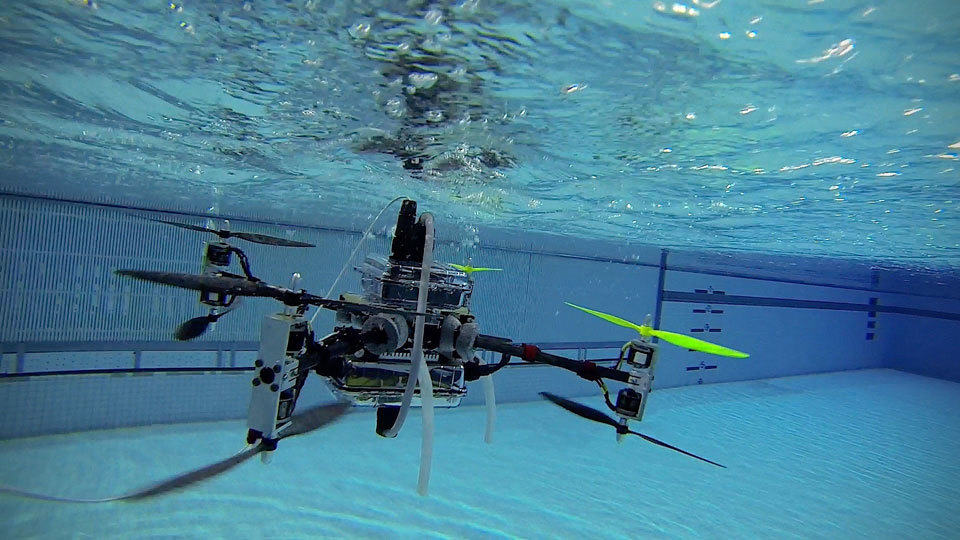Drone and water don’t mix, but at Rutgers University, the researchers beg to differ. Unlike regular multicopters, Rutgers’ SubUAS “Naviator” Drone has no qualm about taking a dive into the water and that’s in addition to its ability fly like any regular multi-rotor drone. More importantly, it needs no transformation as it goes from air into water and vice versa, and it does both without bias; it is equally adept at both. There’s one caveat though; limited by the ability to transmit radio signal in underwater environment, SubUAS “Naviator” Drone has to be tethered at all times – even when it is in flight as it is expected to take the dive whenever required.
Until a new form of radio signal that could break the barrier between water and the surface, SubUAS “Naviator” Drone will remain a tethered machine, which will severely limit its operational capability in terms of range and maneuverability. But that’s one shortfall that will eventually overshadowed by its applications, which may include inspection of structures that span from above to below the surface, such as bridges, ships and oil drilling platforms, as well as search and rescue operations. Seeing the potential of this hybrid drone, the Office of Naval Research offered Rutgers University a grant of $618,000 to further the research of the SubUAS “Naviator” Drone.
The R&D arm of the U.S. Navy said a vehicle such as the SubUAS could aid in effective mapping of mines and also deployed in naval warfare by having a bunch of them hidden away in an underwater base or on a submarine, only to emerge from the depths to scout out enemy ships and then go back into hiding again. Though, Javier Diez, Associate Professor in the Department of Mechanical and Aerospace Engineering of Rutgers University, concedes that much work needs to be done and one such work is to explore the possibility of cutting the cord by controlling the vehicle using sound pulses as opposed to traditional radio waves.


